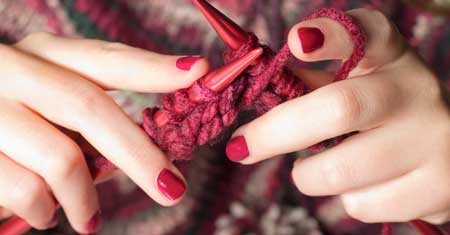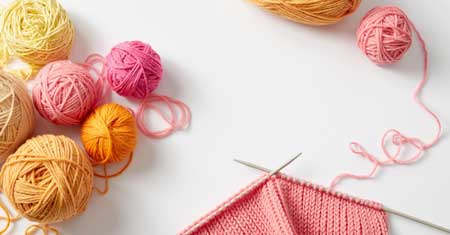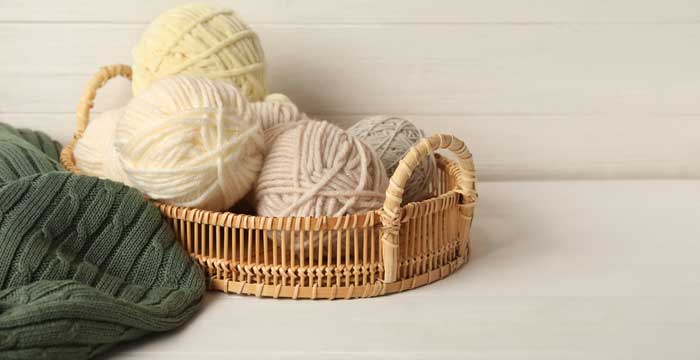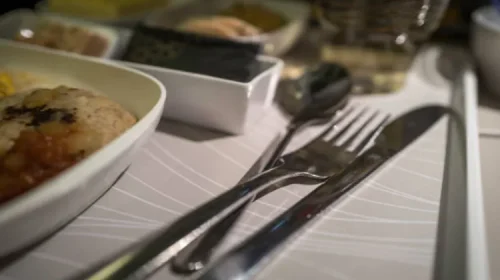Amid bleak economic news and difficult times, knitting designers have been busy brightening little corners of the world with color – luxurious, eye-popping, almost-need-sunglasses color!
Color – Plus Knitting Designs, Patterns, and More

Nicholas begins Color by Kristin: How to Design Your Own Beautiful Knits with a brief introduction relating her personal story. She even includes a photo of her (very colorful) idea board. The reader can soon feel a personal connection with the author– especially after reading about Nicholas’ first knitted sweater – her later projects turned out better!
Next the reader encounters a (very) brief outline of color theory. Nicholas doesn’t dwell long on theory, but quickly moves on.
Color is certainly about color – but a lot more too. The book is really a primer on the Fair Isle knitting technique. This is an advanced knitting skill. Nothing frightening – though Nicholas assumes her audience has already mastered basic techniques. She begins at a level comfortable for the accomplished beginner or the intermediate knitter. From there, explanation and clear illustrations detail how to begin knitting in the Fair Isle tradition. This is a technique where a row of knitting can combine two colors of yarn, but no more than two colors in any one row.
Learning Fair Isle Knitting
It is a big advantage if a knitter has already mastered both the Continental style of knitting (yarn held in left hand) and the English style (yarn held in right hand). The traditional, and fastest, way of Fair Isle knitting involves one color of yarn held in each hand. However, in addition to outlining this traditional approach, Nicholas also explains how to begin Fair Isle knitting for those who are only familiar with the English knitting method, see more.
She gives tips for making the back side of the garment neater, and discusses knitting in the round – the method for knitting socks, mittens, and gloves. She moves on to a discussion (with photos) of the steek – possibly the most feared knitting trick there is!
Next are the two practice projects. These are easy (but colorful) pieces to give a first-time Fair Isle knitter a chance to become familiar with the technique. Then, it’s on to a rainbow of colorful projects!
Bright Colorful Knitting for Baby, Kids, Adults

The projects run the gamut – gloves, scarves, sweaters, mitten, hats, baby afghan, home decor – some examples in photos, All are bursting with luscious, mouth-watering color. Nicholas incorporates a few embroidery stitches here and there in some projects to give an even more interesting and colorful look.
Some readers may find Nicholas’ color choices overpowering or even gaudy. No matter. Nicholas acknowledges early on that a reader may wish to choose her own color scheme. Included are some tips for alternative color schemes for some patterns.
“How-to” for Designing Knitting Projects
The book also includes a “Designer Sourcebook.” This invaluable section of the book includes patterns for various custom edgings to add a little texture to colorful knitted items. The chart glossary gives a knitter many ideas for designing his own Fair Isle knitted garments. Numerous chart designs organized from smallest (two stitch repeat) to huge (thirty stitch repeat) provide endless possibilities for the ambitious knitter.
A few other tips are included for successful knitting such as seaming and embroidery stitches (used for gloves in second photo). Explanations of all abbreviations used in the book follow.
This book is a great resource for any knitter who wishes to embark on the adventure of Fair Isle knitting. It is also a wellspring of inspiration to those who seek reassurance in choosing bright adventurous color combinations.
Amid bleak economic news and difficult times, knitting designers have been busy brightening little corners of the world with color – luxurious, eye-popping, almost-need-sunglasses color!
Color – Plus Knitting Designs, Patterns, and More
Nicholas begins Color by Kristin: How to Design Your Own Beautiful Knits with a brief introduction relating her personal story. She even includes a photo of her (very colorful) idea board. The reader can soon feel a personal connection with the author– especially after reading about Nicholas’ first knitted sweater – her later projects turned out better!
Next the reader encounters a (very) brief outline of color theory. Nicholas doesn’t dwell long on theory, but quickly moves on.
Color is certainly about color – but a lot more too. The book is really a primer on the Fair Isle knitting technique. This is an advanced knitting skill. Nothing frightening – though Nicholas assumes her audience has already mastered basic techniques. She begins at a level comfortable for the accomplished beginner or the intermediate knitter. From there, explanation and clear illustrations detail how to begin knitting in the Fair Isle tradition. This is a technique where a row of knitting can combine two colors of yarn, but no more than two colors in any one row.
Learning Fair Isle Knitting
It is a big advantage if a knitter has already mastered both the Continental style of knitting (yarn held in left hand) and the English style (yarn held in right hand). The traditional, and fastest, way of Fair Isle knitting involves one color of yarn held in each hand. However, in addition to outlining this traditional approach, Nicholas also explains how to begin Fair Isle knitting for those who are only familiar with the English knitting method.
She gives tips for making the back side of the garment neater, and discusses knitting in the round – the method for knitting socks, mittens, and gloves. She moves on to a discussion (with photos) of the steek – possibly the most feared knitting trick there is!
Next are the two practice projects. These are easy (but colorful) pieces to give a first-time Fair Isle knitter a chance to become familiar with the technique. Then, it’s on to a rainbow of colorful projects!
Bright Colorful Knitting for Baby, Kids, Adults
The projects run the gamut – gloves, scarves, sweaters, mitten, hats, baby afghan, home decor – some examples in photos, All are bursting with luscious, mouth-watering color. Nicholas incorporates a few embroidery stitches here and there in some projects to give an even more interesting and colorful look.
Some readers may find Nicholas’ color choices overpowering or even gaudy. No matter. Nicholas acknowledges early on that a reader may wish to choose her own color scheme. Included are some tips for alternative color schemes for some patterns.
“How-to” for Designing Knitting Projects
The book also includes a “Designer Sourcebook.” This invaluable section of the book includes patterns for various custom edgings to add a little texture to colorful knitted items. The chart glossary gives a knitter many ideas for designing his own Fair Isle knitted garments. Numerous chart designs organized from smallest (two stitch repeat) to huge (thirty stitch repeat) provide endless possibilities for the ambitious knitter.

A few other tips are included for successful knitting such as seaming and embroidery stitches (used for gloves in second photo). Explanations of all abbreviations used in the book follow.
This book is a great resource for any knitter who wishes to embark on the adventure of Fair Isle knitting. It is also a wellspring of inspiration to those who seek reassurance in choosing bright adventurous color combinations.




